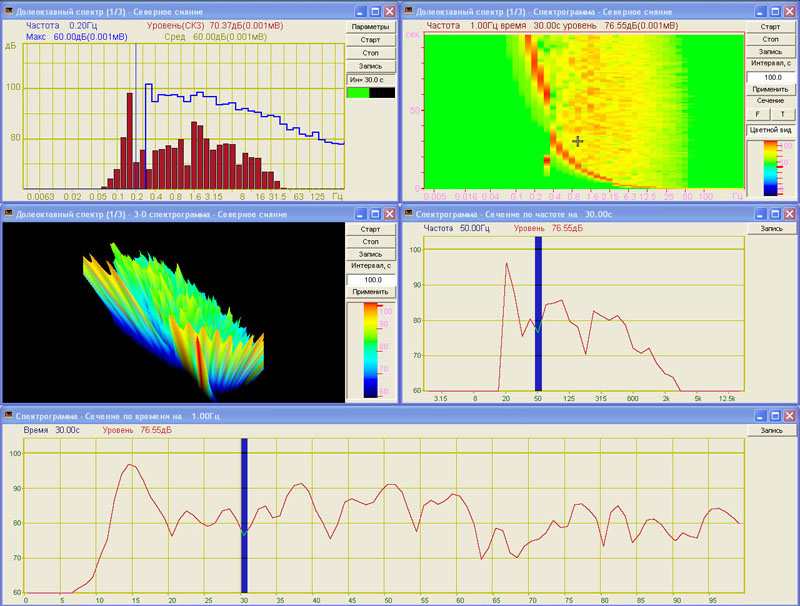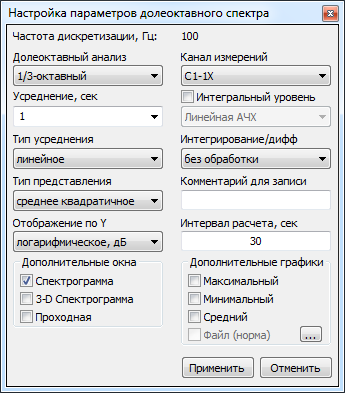CPB (Constant Percentage Bandwidth) Analysis
CPB analysis is used for fractional octave spectral processing of signals coming from the input channels of FFT spectrum analyzers (in real time or recorded time realization view mode), as well as for viewing various spectral characteristics of signals.
CPB analysis is used for separating signals into basic constituents in the frequency area in 1/3-, 1/12-, 1/24-octave spectral bands. The software is used for noise spectral analysis within the scope of acoustic and vibrational measurements.


Main Software Features
- Measurement of signal levels in 1/3-, 1/12-, 1/24-octave spectral bands. Number of bands – 17, 51, 204, 406, respectively;
- Octave and 1/3-octave filters comply with IEC 61260:1995;
- Harmonic constituents analysis;
- Recording and reading the program configuration to facilitate measurements repeatability;
- Integrated AFR correction.
- Analyzed signal averaging: 0.1 to 10 s;
- Averaging types: linear, exponential;
- Correction types: linear correction of an amplitude-frequency characteristic, corrections А, B, C, D;
- Signal integration/differentiation;
- Analyzed signal representation type; spectral density, root-mean-square or crest factor value;
- Calculation and display of a pass-through characteristic, common pass-through, and pass-through harmonics;
- Calculation and display of spectrograms in a 2-dimensional alignment chart, displaying levels by their colors, and in a 3-dimensional map;
- Calculation and display of diagrams with maximum, minimum and average values for a set period;
- Possibility to apply a reference chart to evaluate transition processes characteristics.
Supported Hardware
Input data for CPB analysis are represented by digital data of ZETLAB server channel.
CPB analysis is included into the following software packages:
- ZETLAB ANALIZ – FFT spectrum analyzer software
- ZETLAB VIBRO – shaker control system software
- ZETLAB SEISMO – seismic station software
- ZETLAB NOISE – vibration meter-noise meter software
CPB analysis is included in the Signal Analysis software group.
